Huge Interest in Machine Learning

Computer Vision
Natural Language Processing
Robotics
Data
Huge Interest in Machine Learning

Computer Vision
Natural Language Processing
Robotics
Data
: usually viewed as fixed
Bayesian Optimization
Automatic explore-exploit tradeoff
From Bayesian Optimization to Bayesian Interactive Decision-making
Up next: technical fundamentals which make this possible
Research Outline
Pathwise Conditioning
(ICML 2020, JMLR 2020)
Numerical Stability
(current)
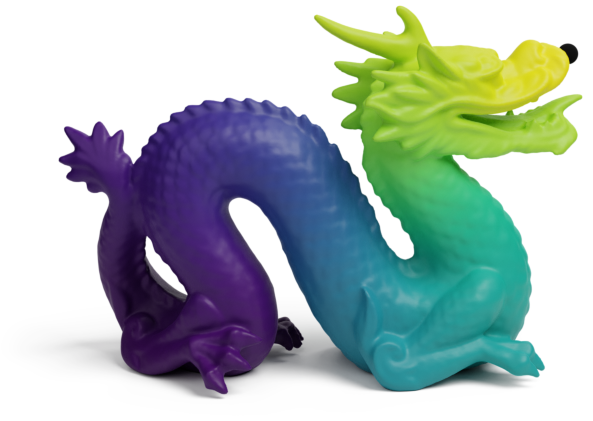
Manifolds
(NeurIPS 2020, CoRL 2021)
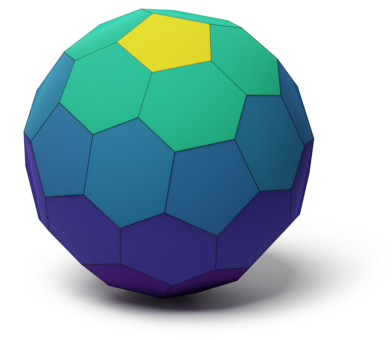
Graphs
(AISTATS 2021)
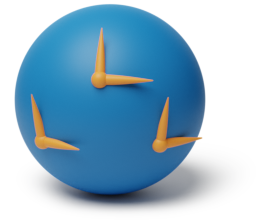
Vector Fields
(NeurIPS 2021)
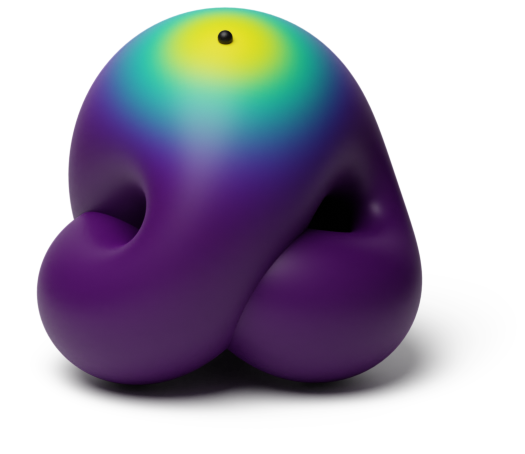
Lie Groups
(current)
Pathwise Conditioning
of
Gaussian Processes
ICML 2020 Outstanding Paper Honorable Mention
Gaussian Processes
Geospatial Learning
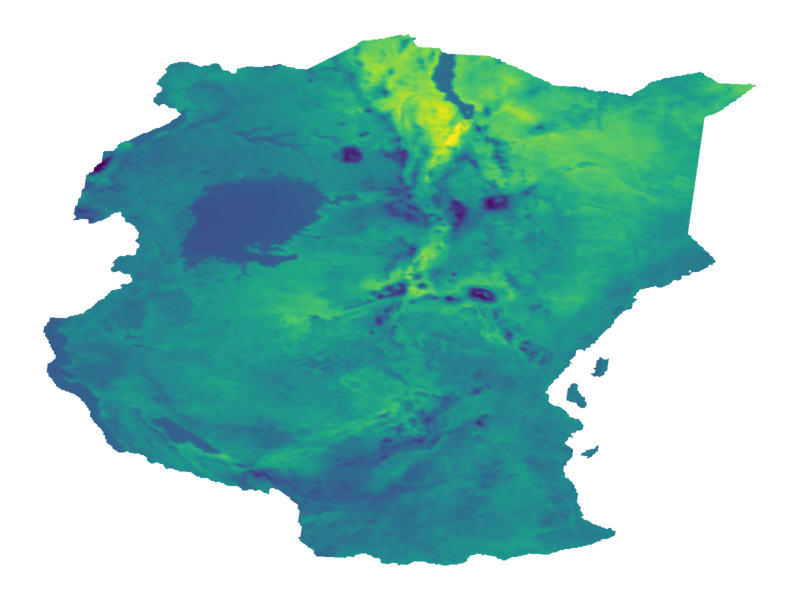
Large-scale probabilistic interpolation
Modeling Dynamical Systems with Uncertainty
$$ \htmlData{fragment-index=0,class=fragment}{ x_0 } \qquad \htmlData{fragment-index=1,class=fragment}{ x_1 = x_0 + f(x_0)\Delta t } \qquad \htmlData{fragment-index=2,class=fragment}{ x_2 = x_1 + f(x_1)\Delta t } \qquad \htmlData{fragment-index=3,class=fragment}{ .. } $$
Conditioning of Multivariate Gaussians
$$ (\v\theta,\v{y}) \~\f{N}(\v\mu,\m\Sigma) $$
$$ (\v\theta\given\v{y}=\v\gamma) \~\f{N}(\v\mu_{\v\theta\given\v{y}}, \m\Sigma_{\v\theta\given\v{y}}) $$
$$ \begin{aligned} \v\mu_{\v\theta\given\v{y}} &= \v\mu_{\v\theta} + \m\Sigma_{\v\theta\v{y}}\m\Sigma_{\v{y}\v{y}}^{-1}(\v\gamma-\v\mu_{\v{y}}) & \m\Sigma_{\v\theta\given\v{y}} &= \m\Sigma_{\v\theta\v\theta} - \m\Sigma_{\v\theta\v{y}}\m\Sigma_{\v{y}\v{y}}^{-1}\m\Sigma_{\v{y}\v\theta} \end{aligned} $$
Calculate conditional, draw samples
Conditioning of Multivariate Gaussians
$$ (\v\theta,\v{y}) \~\f{N}(\v\mu,\m\Sigma) $$
$$ (\v\theta\given\v{y}=\v\gamma) = \v\theta + \m\Sigma_{\v\theta\v{y}}\m\Sigma_{\v{y}\v{y}}^{-1}(\v\gamma-\v\mu_{\v{y}}) $$
Draw samples, transform into conditional
Pathwise Conditioning
$$ \htmlData{class=fragment,fragment-index=2} { (f\given\v{y})(\.) = } \htmlData{class=fragment,fragment-index=0} { \mathrlap{f(\.)} } \htmlData{class=fragment,fragment-index=3} { \ubr{\phantom{f(\.)}}{\c{O}(N_*^3)} } \htmlData{class=fragment,fragment-index=1} { + \m{K}_{(\.)\v{x}} } \htmlData{class=fragment,fragment-index=1} { \mathrlap{\m{K}_{\v{x}\v{x}}^{-1}} } \htmlData{class=fragment,fragment-index=3} { \ubr{\phantom{\m{K}_{\v{x}\v{x}}^{-1}}}{\c{O}(N^3)} } \htmlData{class=fragment,fragment-index=1} { (\v{y} - f(\v{x})) } $$
Efficient Sampling
$$ \htmlData{class=fragment,fragment-index=0}{ (f\given\v{y})(\.) } \htmlData{class=fragment,fragment-index=1}{ \approx \sum_{i=1}^L w_i \phi_i(\.) } \htmlData{class=fragment,fragment-index=4}{ \mathllap{\ubr{\vphantom{\sum_{j=1}^m}\phantom{\sum_{i=1}^\ell w_i \phi_i(\.)}}{\t{basis function prior approx.}}} } \htmlData{class=fragment,fragment-index=2}{ + \sum_{j=1}^N v_j k(x_j,\.) } \quad \phantom{\v{v} = \m{K}_{\v{x}\v{x}}^{-1}(\v{u} - \m\Phi^T\v{w})} \htmlData{class=fragment fade-out d-print-none,fragment-index=6}{ \htmlData{class=fragment,fragment-index=3}{ \mathllap{\v{v} = \m{K}_{\v{x}\v{x}}^{-1}(\v{u} - \m\Phi^T\v{w})} } } \htmlData{class=fragment,fragment-index=6}{ \mathllap{\begin{gathered} \vphantom{} \\[-2ex] \c{O}(N_*)\,\t{complexity} \\[-0.5ex] \smash{\t{in num. test points}} \end{gathered}} } $$
Acquisition Functions for Bayesian Optimization
Thompson sampling: choose $$ \htmlClass{fragment}{ x_{n+1} = \argmin_{x\in\c{X}} \alpha_n(x) } \qquad \htmlClass{fragment}{ \alpha_n \~ f\given\v{y} . } $$
Pathwise conditioning $\leadsto$ easy to calculate $\alpha_n$
More generally: $\alpha_n(x) = \E_{\psi\~f\given\v{y}}(A_\psi(x))$
Parallel Bayesian Optimization: Thompson Sampling
Better regret curves owing to reduced approximation error
Learning Dynamical Systems
Accurate and efficient $\c{O}(N_*)$ propagation of uncertainty
Sparse Gaussian Processes
$$ (f\given\v{y})(\.) = f(\.) + \sum_{i=1}^N v_i^{(\v{y})} k(x_i,\.) \vphantom{\sum_{j=1}^M v_j^{(\v{u})} k(z_j,\.)} $$ Exact Gaussian process: $\c{O}(N^3)$
$$ (f\given\v{y})(\.) \approx f(\.) + \sum_{j=1}^M v_j^{(\v{u})} k(z_j,\.) $$ Sparse Gaussian process: $\c{O}(NM^2)$
Works well under data-redundancy
Research Outline
Pathwise Conditioning
(ICML 2020, JMLR 2020)
Numerical Stability
(current)

Manifolds
(NeurIPS 2020, CoRL 2021)

Graphs
(AISTATS 2021)

Vector Fields
(NeurIPS 2021)

Lie Groups
(current)
Numerical Stability
of
Gaussian Processes
Numerical Stability
Condition number: quantifies difficulty of solving $\m{A}^{-1}\v{b}$
$$ \htmlClass{fragment}{ \f{cond}(\m{A}) } \htmlClass{fragment}{ = \lim_{\eps\to0} \sup_{\norm{\v\delta} \leq \eps\norm{\v{b}}} \frac{\norm{\m{A}^{-1}(\v{b} + \v\delta) - \m{A}^{-1}\v{b}}_2}{\eps\norm{\m{A}^{-1}\v{b}}_2} } \htmlClass{fragment}{ = \frac{\lambda_{\max}(\m{A})}{\lambda_{\min}(\m{A})} } $$
$\lambda_{\min},\lambda_{\max}$: eigenvalues
Cholesky Factorization
Result. Let $\m{A}$ be a symmetric positive definite matrix of size $N \x N$, where $N \gt 10$. Assume that $$ \f{cond}(\m{A}) \leq \frac{1}{2^{-t} \x 3.9 N^{3/2}} $$ where $t$ is the length of the floating point mantissa, and that $3N2^{-t} \lt 0.1$. Then floating point Cholesky factorization will succeed, producing a matrix $\m{L}$ satisfying $$ \htmlClass{fragment}{ \m{L}\m{L}^T = \m{A} + \m{E} } \qquad\qquad \htmlClass{fragment}{ \norm{\m{E}}_2 \leq 2^{-t} \x 1.38 N^{3/2} \norm{\m{A}}_2 . } $$
Conjugate Gradients
Refinement of gradient descent for solving linear systems $\m{A}^{-1}\v{b}$
Convergence rate depends on $\f{cond}(\m{A})$
Condition Numbers of Kernel Matrices
Are kernel matrices always well-conditioned? No.
One-dimensional time series on grid: Kac–Murdock–Szegö matrix $$ \m{K}_{\v{x}\v{x}} = \scriptsize\begin{pmatrix} 1 & \rho &\rho^2 &\dots & \rho^{n-1} \\ \rho & 1 & \rho & \dots & \rho^{n-2} \\ \vdots & \vdots &\ddots & \ddots & \vdots \\ \rho^{n-1} & \rho^{n-2} & \rho^{n-3} & \dots & 1 \end{pmatrix} $$ for which $\frac{1+ 2\rho + 2\rho\eps + \rho^2}{1 - 2\rho - 2\rho\eps + \rho^2} \leq \f{cond}(\m{K}_{\v{x}\v{x}}) \leq \frac{(1+\rho)^2}{(1-\rho)^2}$, where $\eps = \frac{\pi^2}{N+1}$.
Condition Numbers of Kernel Matrices
Problem: too much correlation $\leadsto$ points too close by
Minimum Separation
Separation: minimum distance between distinct $z_i$ and $z_j$
Proposition. Assuming spatial decay and stationarity, separation controls $\f{cond}(\m{K}_{\v{z}\v{z}})$ uniformly in $M$.
Idea: use this to select numerically stable inducing points
Inducing Point Selection via Cover Trees
Spatial resolution: maximum distance from $x_i$ to nearest $z_j$
Cover tree algorithm: guarantee spatial resolution and separation
The Clustered-data Approximation
Replace large dataset with re-weighted sparser dataset
The Clustered-data Approximation
$$ \htmlClass{fragment}{ (f\given\v{y})(\.) = f(\.) + \m{K}_{(\.)\v{z}} (\m{K}_{\v{z}\v{z}} + \m\Lambda)^{-1} (\v{u} - f(\v{z}) - \v\epsilon) } \qquad \htmlClass{fragment}{ \v\epsilon \~\f{N}(\v{0},\m\Lambda) } $$
Minimum eigenvalue: $\lambda_{\min}(\m{K}_{\v{z}\v{z}} + \m\Lambda) \geq {\displaystyle\min_{i=1,..,M}} \Lambda_{ii}$
Clustered-data approximation results in extra stability
Empirical Accuracy and Computational Cost
Spatial resolution directly controls error and computational cost
Inducing Point Selection Comparison
Good performance-stability tradeoff in geospatial settings
Geospatial Learning
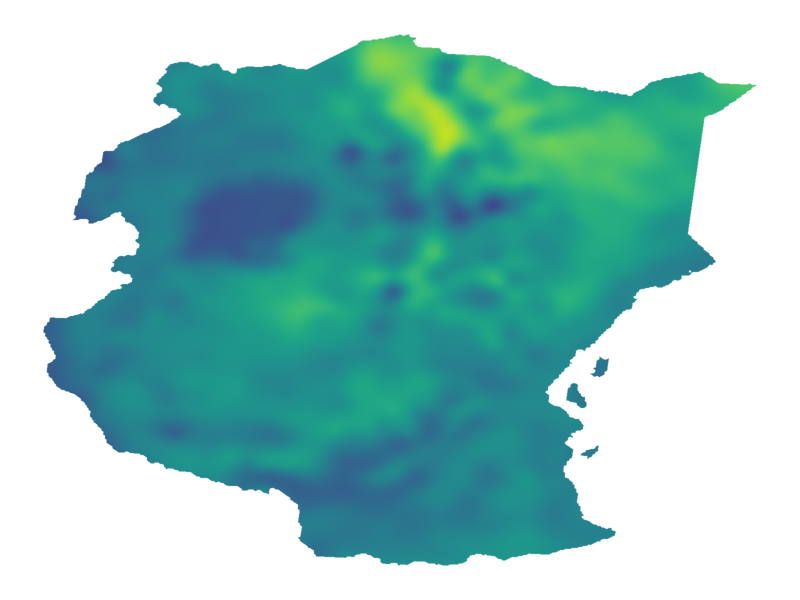
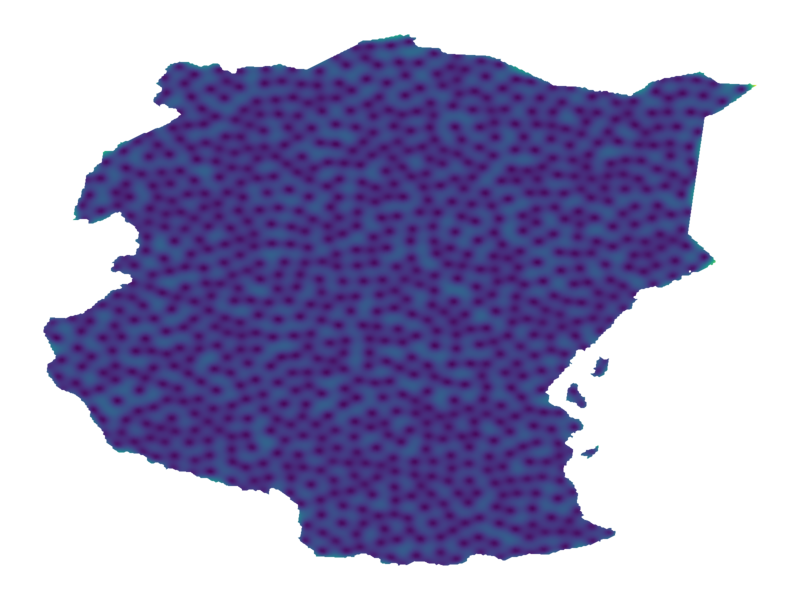
$\eps = 0.09, M = 902$
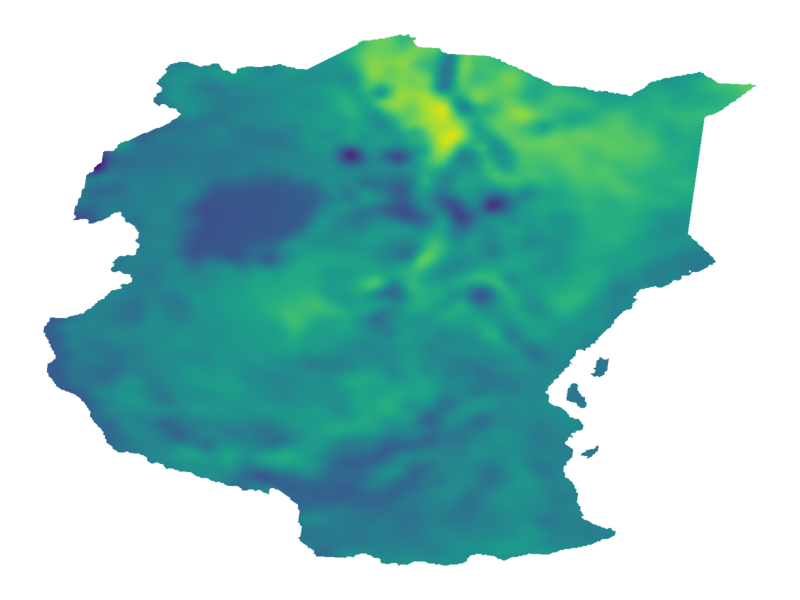
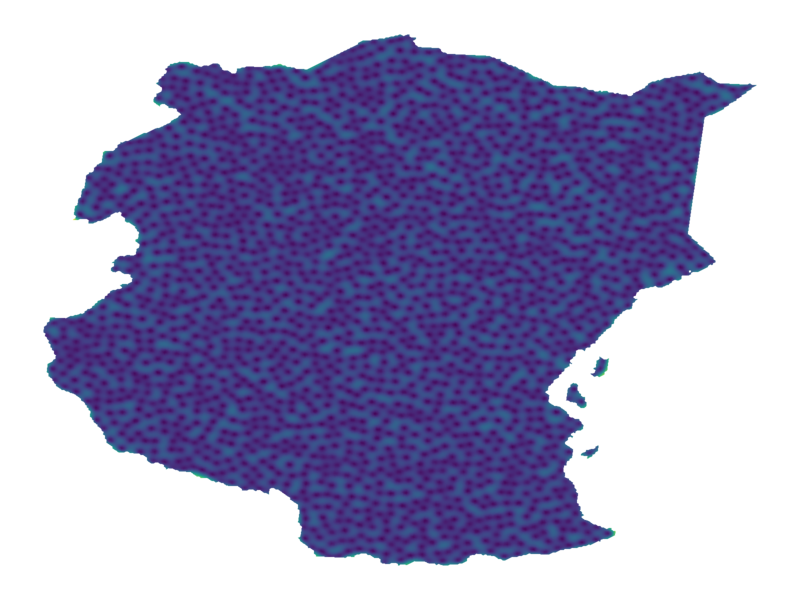
$\eps = 0.06, M = 1934$
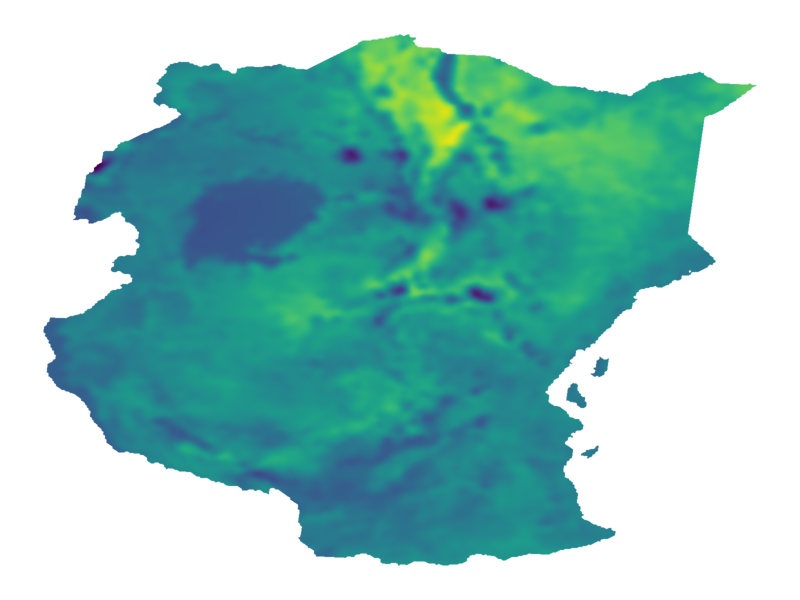
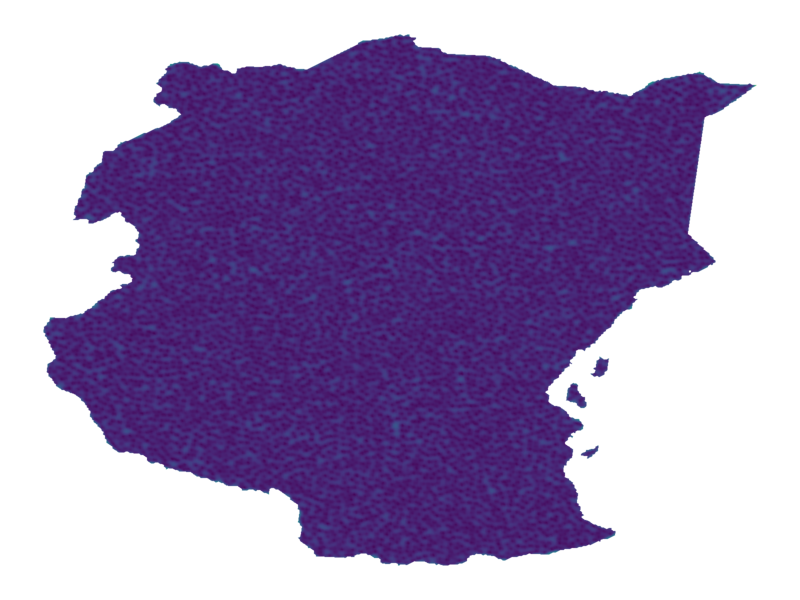
$\eps = 0.03, M = 6851$
Fine-scale error and computational cost vary with spatial resolution
Approximation Error and Numerical Stability
Dashed line: increased jitter due to Cholesky failure in floating point
Slightly lower approximation accuracy, but better stability
Research Outline
Pathwise Conditioning
(ICML 2020, JMLR 2020)
Numerical Stability
(current)

Manifolds
(NeurIPS 2020, CoRL 2021)

Graphs
(AISTATS 2021)

Vector Fields
(NeurIPS 2021)

Lie Groups
(current)
Non-Euclidean Gaussian Processes




AISTATS 2021 Best Student Paper
Bayesian Optimization in Robotics
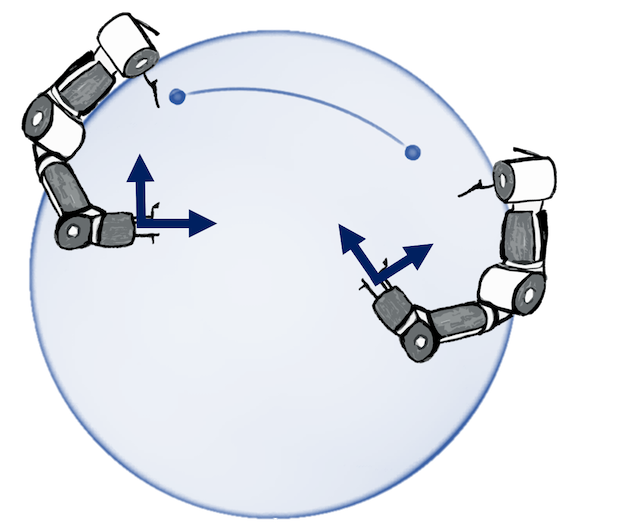
Orientation: sphere
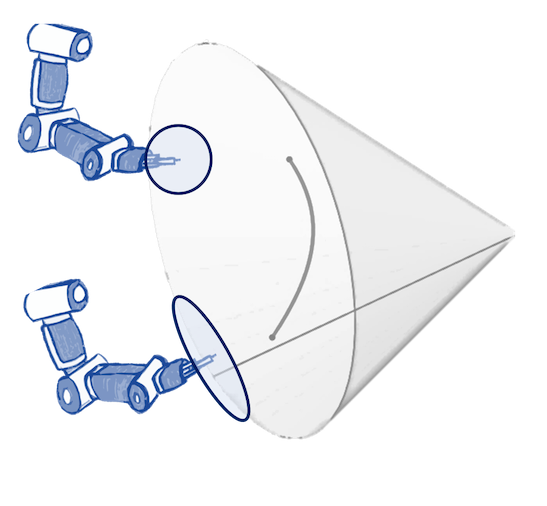
Manipulability:
SPD manifold
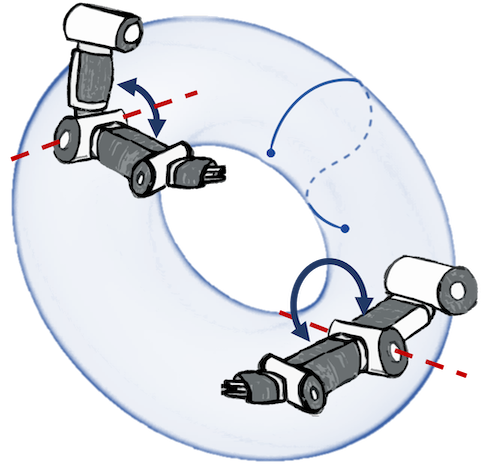
Joint postures: torus
Matérn Gaussian Processes
$\nu = 1/2$
$\nu = 3/2$
$\nu = 5/2$
$\nu = \infty$
$$ \htmlData{class=fragment fade-out,fragment-index=9}{ \footnotesize \mathclap{ k_\nu(x,x') = \sigma^2 \frac{2^{1-\nu}}{\Gamma(\nu)} \del{\sqrt{2\nu} \frac{\norm{x-x'}}{\kappa}}^\nu K_\nu \del{\sqrt{2\nu} \frac{\norm{x-x'}}{\kappa}} } } \htmlData{class=fragment d-print-none,fragment-index=9}{ \footnotesize \mathclap{ k_\infty(x,x') = \sigma^2 \exp\del{-\frac{\norm{x-x'}^2}{2\kappa^2}} } } $$
$\sigma^2$: variance
$\kappa$: length scale
$\nu$: smoothness
$\nu\to\infty$: recovers squared exponential kernel
Riemannian Geometry


How should Matérn kernels generalize to this setting?
Geodesics
$$ k_\infty^{(d_g)}(x,x') = \sigma^2\exp\del{-\frac{d_g(x,x')^2}{2\kappa^2}} $$
Theorem. (Feragen et al.) Let $M$ be a complete Riemannian manifold without boundary. If $k_\infty^{(d_g)}$ is positive semi-definite for all $\kappa$, then $M$ is isometric to a Euclidean space.
Need a different candidate generalization
Stochastic Partial Differential Equations
$$ \htmlData{class=fragment,fragment-index=0}{ \underset{\t{Matérn}}{\undergroup{\del{\frac{2\nu}{\kappa^2} - \Delta}^{\frac{\nu}{2}+\frac{d}{4}} f = \c{W}}} } \qquad \htmlData{class=fragment,fragment-index=1}{ \underset{\t{squared exponential}}{\undergroup{\vphantom{\del{\frac{2\nu}{\kappa^2} - \Delta}^{\frac{\nu}{2}+\frac{d}{4}}} e^{-\frac{\kappa^2}{4}\Delta} f = \c{W}}} } $$
$\Delta$: Laplacian
$\c{W}$: (rescaled) white noise
$e^{-\frac{\kappa^2}{4}\Delta}$: (rescaled) heat semigroup
Generalizes well to the Riemannian setting
Riemannian Matérn Kernels: compact spaces
$$ k_\nu(x,x') = \frac{\sigma^2}{C_\nu} \sum_{n=0}^\infty \del{\frac{2\nu}{\kappa^2} - \lambda_n}^{\nu-\frac{d}{2}} f_n(x) f_n(x') $$
$\lambda_n, f_n$: Laplace–Beltrami eigenpairs
Analytic expressions for circle, sphere, ..
Riemannian Matérn Kernels
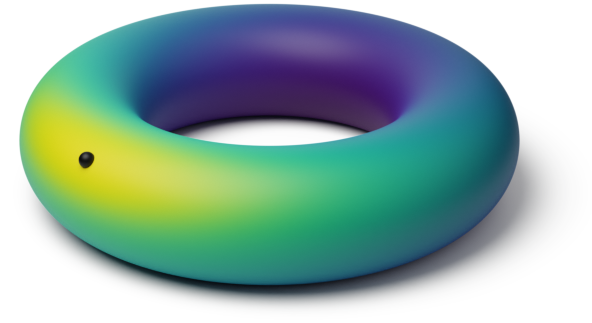
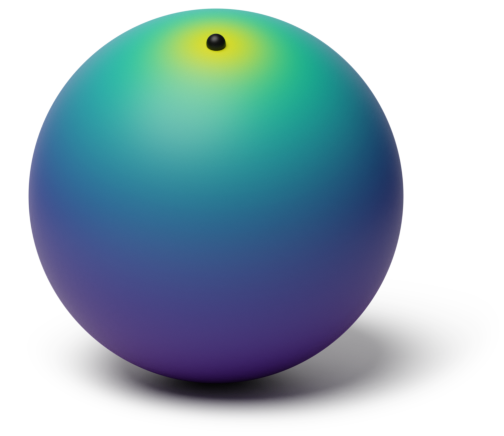

$k_{1/2}(\htmlStyle{color:rgb(0, 0, 0)!important}{\bullet},\.)$
Example: regression on the surface of a dragon
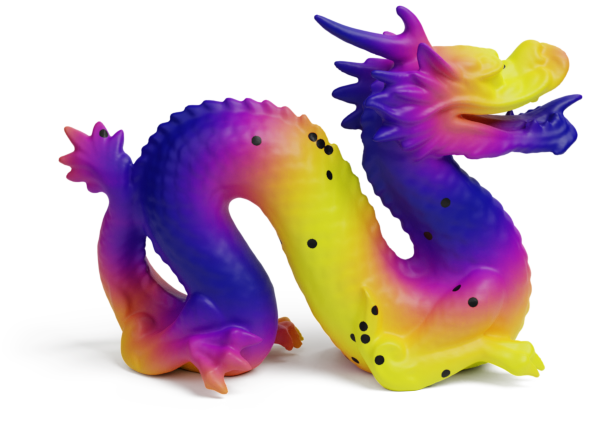
(a) Ground truth
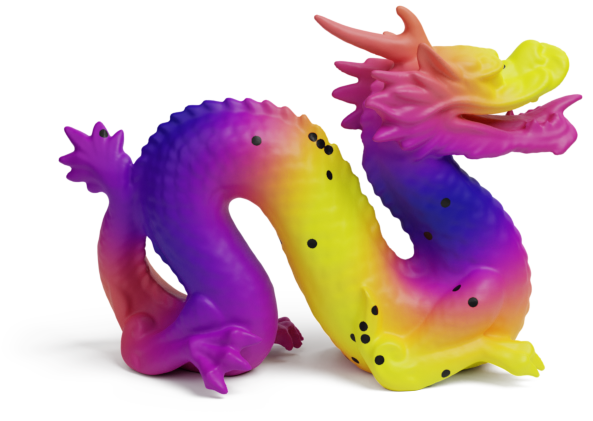
(b) Posterior mean
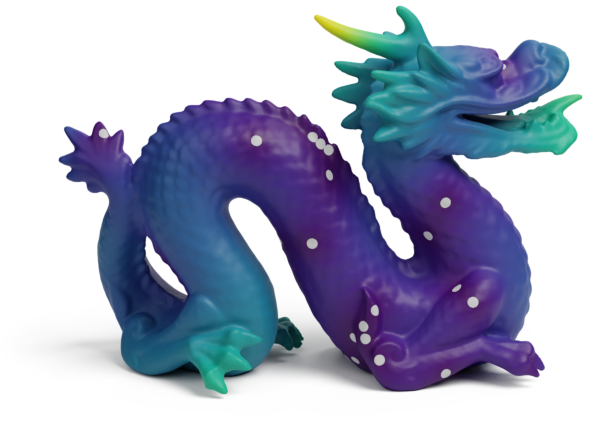
(c) Std. deviation
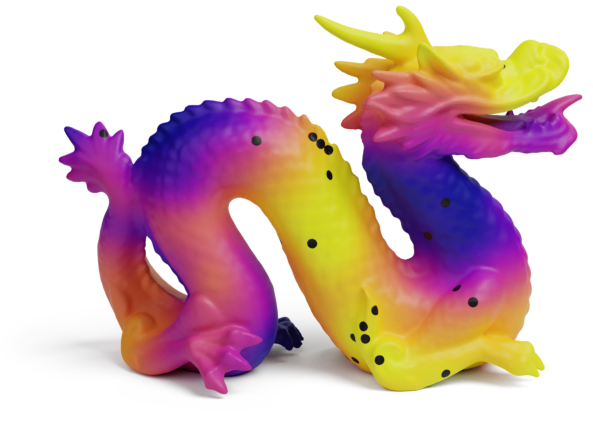
(d) Posterior sample
Weighted Undirected Graphs
$$ f : G \to \R $$
$$ f\Big(\smash{\includegraphics[height=2.75em,width=1.5em]{figures/g1.svg}}\Big) \to \R $$
$$ f\Big(\smash{\includegraphics[height=2.75em,width=1.5em]{figures/g2.svg}}\Big) \to \R $$
$$ f\Big(\smash{\includegraphics[height=2.75em,width=1.5em]{figures/g3.svg}}\Big) \to \R $$
The Graph Laplacian
$$ \htmlClass{fragment}{ (\m\Delta\v{f})(x) = \sum_{x' \~ x} w_{xx'} (f(x) - f(x')) } $$ $$ \htmlClass{fragment}{ \m\Delta = \m{D} - \m{W} } $$
$\m{D}$: degree matrix
$\m{W}$: (weighted) adjacency matrix
Note: different sign convention, analogous to Euclidean $-\Delta$
Graph Matérn Gaussian Processes
$$ \htmlClass{fragment}{ \underset{\t{Matérn}}{\undergroup{\del{\frac{2\nu}{\kappa^2} + \m\Delta}^{\frac{\nu}{2}} \v{f} = \c{W}\mathrlap{\hspace*{-2.42ex}\c{W}\hspace*{-2.42ex}\c{W}}}} } \qquad \htmlClass{fragment}{ \underset{\t{squared exponential}}{\undergroup{\vphantom{\del{\frac{2\nu}{\kappa^2} - \m\Delta}^{\frac{\nu}{2}+\frac{d}{4}}} e^{\frac{\kappa^2}{4}\m\Delta} \v{f} = \c{W}\mathrlap{\hspace*{-2.42ex}\c{W}\hspace*{-2.42ex}\c{W}}}} } $$
$\m\Delta$: graph Laplacian
$\c{W}\mathrlap{\hspace*{-2.42ex}\c{W}\hspace*{-2.42ex}\c{W}}$: standard Gaussian
Graph Matérn Gaussian Processes
$$ \htmlClass{fragment}{ \underset{\t{Matérn}}{\undergroup{\vphantom{\v{f} \~\f{N}\del{\v{0},e^{-\frac{\kappa^2}{4}\m\Delta}}} \v{f} \~\f{N}\del{\v{0},{\textstyle\del{\frac{2\nu}{\kappa^2} + \m\Delta}^{-\nu}}}}} } \qquad \htmlClass{fragment}{ \underset{\t{squared exponential}}{\undergroup{\v{f} \~\f{N}\del{\v{0},e^{-\frac{\kappa^2}{2}\m\Delta}}}} } $$
Graph Fourier Features
$$ \htmlClass{fragment}{ k_\nu(x,x') = \frac{\sigma^2}{C_\nu} \sum_{n=1}^{|G|} \del{\frac{2\nu}{\kappa^2} + \lambda_n}^{-\nu} \v{f}_n(x)\v{f}_n(x') } $$ $\lambda_n,\v{f}_n$: eigenvalues and eigenvectors of graph Laplacian
Prior Variance
(a) Complete graph
(b) Star graph
(c) Random graph
(d) Random graph
Prior variance depends on geometry
Example: Graph Interpolation of Traffic
(a) Predictive mean
(b) Standard deviation
Example: Graph Interpolation of Traffic
(a) Predictive mean
(b) Standard deviation
Riemannian Limits

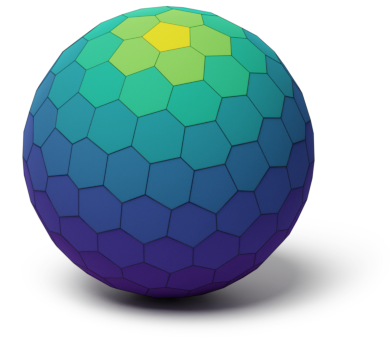
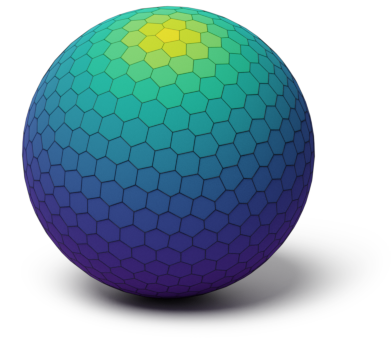
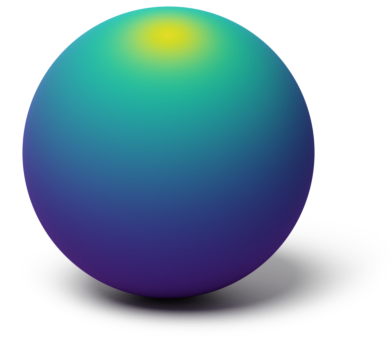
Gaussian Vector Fields
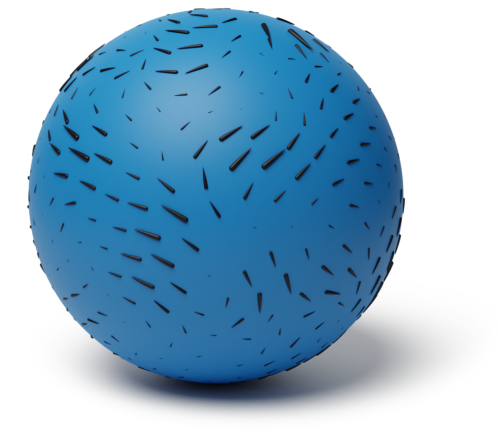
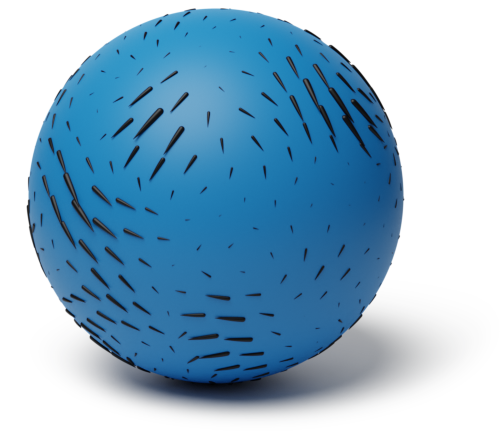
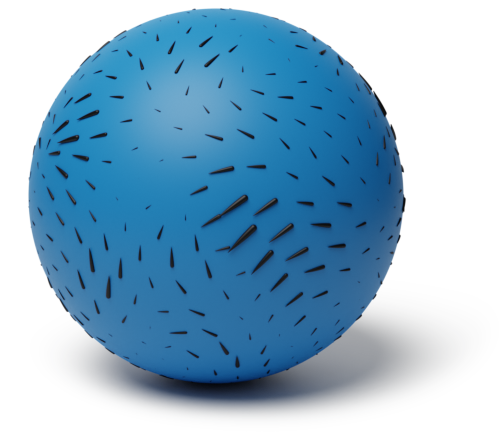
Frames
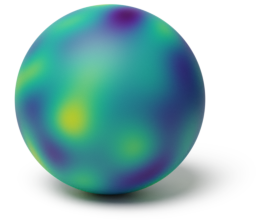
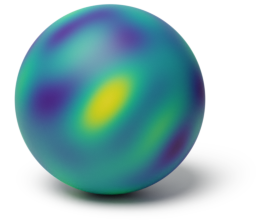
$ \large\x\, $

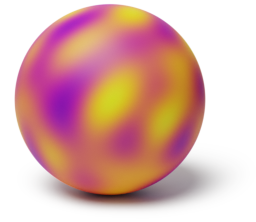
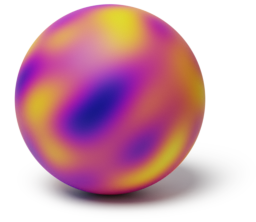
$ \large\x\, $

$ \large= $
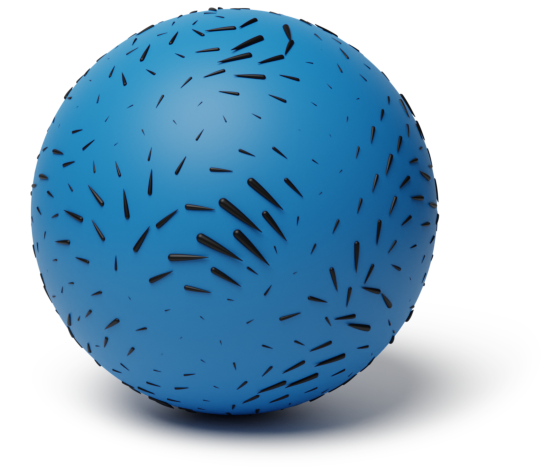
Same vector field: represented differently in different frames
Projected Kernels
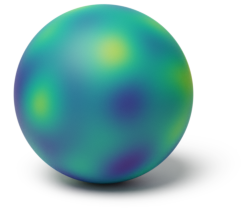
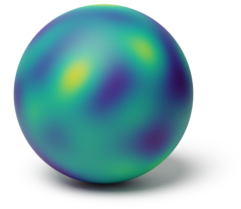
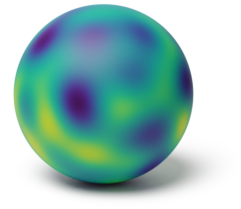
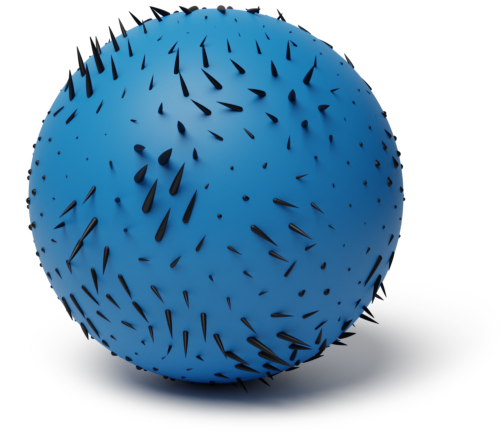
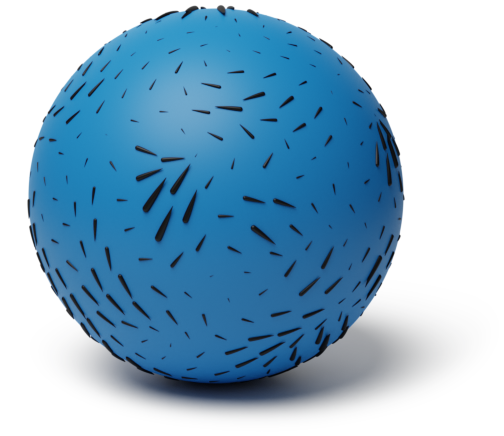
Construct vector fields by embedding and flattening scalar fields
Lie Groups and Homogeneous Spaces
Stationary kernels on Lie groups
$$ \begin{aligned} \htmlData{fragment-index=1,class=fragment}{ k(g_1,g_2) } & \htmlData{fragment-index=1,class=fragment}{ = \sum_{n=1}^\infty a(\lambda_n) \v{f}_n(g_1)\v{f}_n(g_2) } \\ & \htmlData{fragment-index=2,class=fragment}{ = \sum_{\lambda\in\Lambda} a^{(\lambda)} \f{Re} \chi^{(\lambda)}(g_2^{-1} \. g_1) } \end{aligned} $$
Computable numerically using representation-theoretic quantities
Sphere:$\vphantom{\leadsto}$
$\ubr{\phantom{\text{Sphere}}}{\text{homogeneous space}}$
spherical harmonics $\leadsto$ Gegenbauer polynomials
Example: real projective space

Kernel
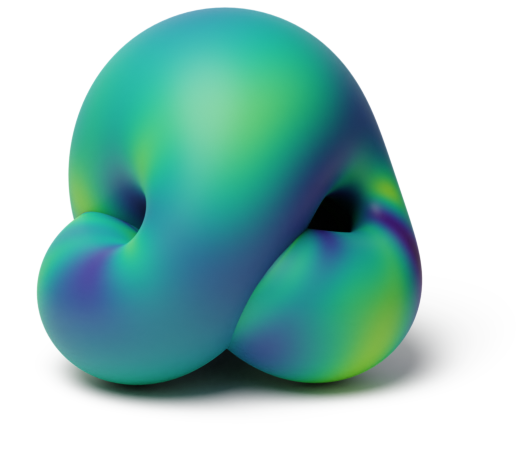
Prior samples
Example: regression on a real projective space
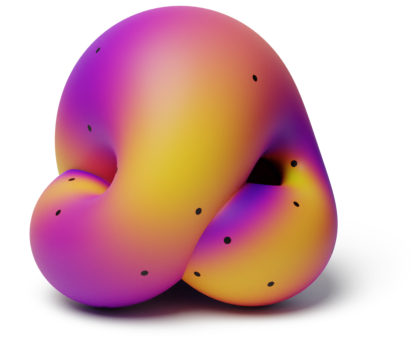
(a) Ground truth
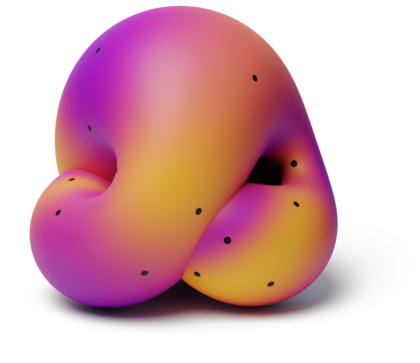
(b) Posterior mean
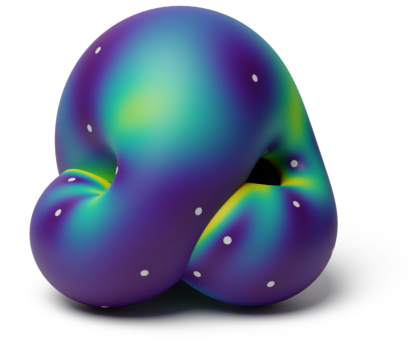
(c) Std. deviation
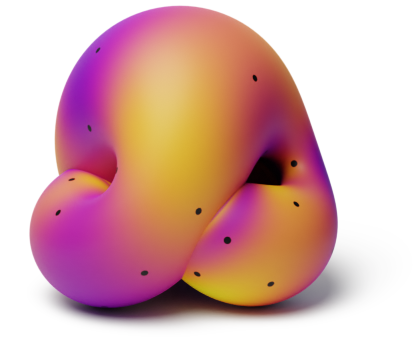
(d) Posterior sample
Geometry-aware Bayesian Optimization
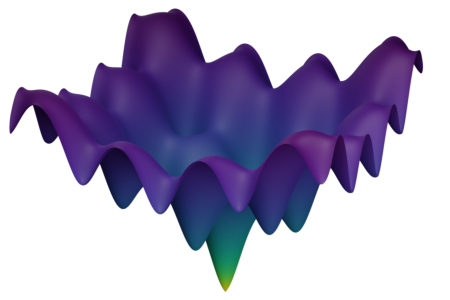
Ackley function
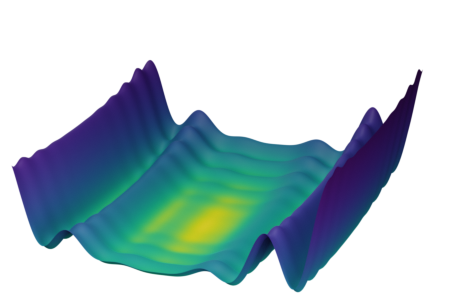
Levy function
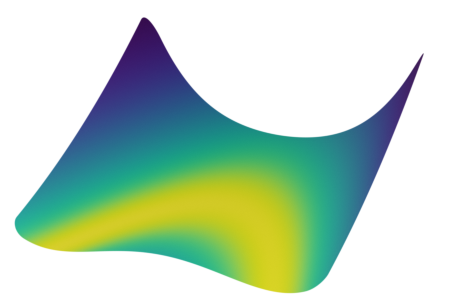
Rosenbrock function
Geometry-aware Bayesian Optimization
Geometry-aware Bayesian Optimization
Geometry-aware Bayesian Optimization
Geometric Kernels in Python
Thank you!
https://avt.im/· @avt_im
Thank you!
https://avt.im/· @avt_im
J. T. Wilson,* V. Borovitskiy,* P. Mostowsky,* A. Terenin,* M. P. Deisenroth. Efficiently Sampling Functions from Gaussian Process Posteriors. International Conference on Machine Learning, 2020. Honorable Mention for Outstanding Paper Award.
J. T. Wilson,* V. Borovitskiy,* P. Mostowsky,* A. Terenin,* M. P. Deisenroth. Pathwise Conditioning of Gaussian Process. Journal of Machine Learning Research, 2021.
V. Borovitskiy,* P. Mostowsky,* A. Terenin,* M. P. Deisenroth. Matérn Gaussian Processes on Riemannian Manifolds. Advances in Neural Information Processing Systems, 2020.
V. Borovitskiy,* I. Azangulov,* P. Mostowsky,* A. Terenin,* M. P. Deisenroth, N. Durrande. Matérn Gaussian Processes on Graphs. Artificial Intelligence and Statistics, 2021. Best Student Paper Award.
M. J. Hutchinson,* A. Terenin,* V. Borovitskiy,* S. Takao,* Y. W. Teh, M. P. Deisenroth. Vector-valued Gaussian Processes on Riemannian Manifolds via Gauge Independent Projected Kernels. Advances in Neural Information Processing Systems, 2021.
N. Jaquier,* V. Borovitskiy,* A. Smolensky, A. Terenin, T. Asfour, L. Rozo. Geometry-aware Bayesian Optimization in Robotics using Riemannian Matérn Kernels. Conference on Robot Learning, 2021.
I. Azangulov, A. Smolensky, A. Terenin, V. Borovitskiy. Stationary Kernels and Gaussian Processes on Lie Groups and their Homogeneous Spaces I: the Compact Case. arXiv: 2208.14960, 2022.
A. Terenin,* D. R. Burt,* A. Artemev, S. Flaxman, M. van der Wilk, C. E. Rasmussen, H. Ge. Numerically Stable Sparse Gaussian Processes via Minimum Separation using Cover Trees. arXiv: 2210.07893, 2022.
*Equal contribution